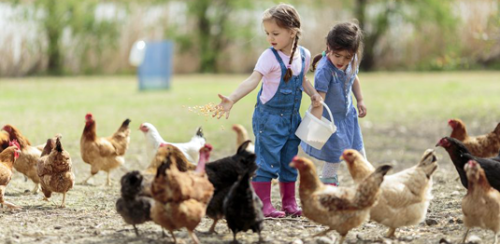Credit: Boggy / Fotolia.com
A number of factors that have a decisive impact on the likelihood that young children will develop asthmatic conditions or allergies have been identified in recent years. However, the mechanisms that account for their effects remain largely obscure. A new article written by LMU pediatricians and immunologists from Dr. von Hauner's Children's Hospital, in collaboration with colleagues from Finland and China, now presents an up-to-date review of the issue. In the paper, the authors subject eight previously published studies, based on work done in various countries on several continents, to critical reappraisal. The data reported in these studies provide a comprehensive picture of the living conditions of tens of thousands of children in both rural and urban settings, and enables a comparative analysis of the environmental factors that determine allergy risk. The article has just appeared in the journal Pediatric Allergy Immunology.
Environmental factors are known to play a crucial role in the development of asthma and allergies. Among the studies considered in the review is a series of groundbreaking papers based on work carried out by the group led by Professor Erika von Mutius, Head of the Outpatient Department of Asthma and Allergy at the Children's Hospital. Taken together, these investigations provided compelling evidence for the so-called farm effect in the etiology of asthma and allergic conditions: Their findings convincingly demonstrated that children raised on dairy farms are far less likely to develop asthma or allergies than their contemporaries who grow up in urban surroundings.
The quest for the shared factor(s)
The new review, authored by a group of researchers led by Privatdozent Dr. Bianca Schaub (who is Prof. von Mutius' deputy at the Children's Hospital), concludes that the positive effect of a rural upbringing can be clearly discerned among children reared in farming communities in widely separated regions around the world. Work carried out in Europe has confirmed the farm effect in Germany, Austria and Switzerland, but also in China children who grow up in rural areas are less likely to develop allergies than their urban counterparts.
In rural areas, children apparently come into contact with a range of microorganisms which reduce the risk of developing allergic conditions. Dr. Paul C. Schröder, a member of Schaub's research group and first author on the study summarizes the results as follows: "The wide range of microbial exposure they encounter appears to have a protective effect." In several previous studies, analyses of house-dust have led to the identification of bacteria and fungi that appear to inhibit the development of asthma and hay-fever. What has so far been lacking are comparative studies that address the question of whether or not similar mixtures of microorganisms are responsible for the anti-allergy effects observed in different regions," says Schröder.
After all, children in rural areas of China are brought up under conditions that differ considerably in many respects from those experienced by children who grow up on European farms. "Chinese farms cannot be compared with farms here in Bavaria because, for a start, farmers in China don't keep cows," says Schröder. According to a Finnish study, microorganisms in the water supply may also contribute to "prevent" children from developing allergies.
How various types of microorganisms act on the immune system to reduce the incidence of allergic reactions has been elucidated in several earlier studies. As part of a DFG-funded project led by Bianca Schaub, the LMU researchers are collaborating with scientists in China and Finland on a study designed to compare the mechanisms that underlie the protective effects of a rural upbringing in different parts of the world. "This provides us with a unique opportunity to determine whether the diverse environmental factors mediate their positive impact via the same or on different immunological pathways," says Bianca Schaub.
More information: "The rural-urban enigma of allergy: What can we learn from studies around the world?" Pediatr Allergy Immunol. 2015 Jan 24. DOI: 10.1111/pai.12341
Provided by Ludwig Maximilian University of Munich






















